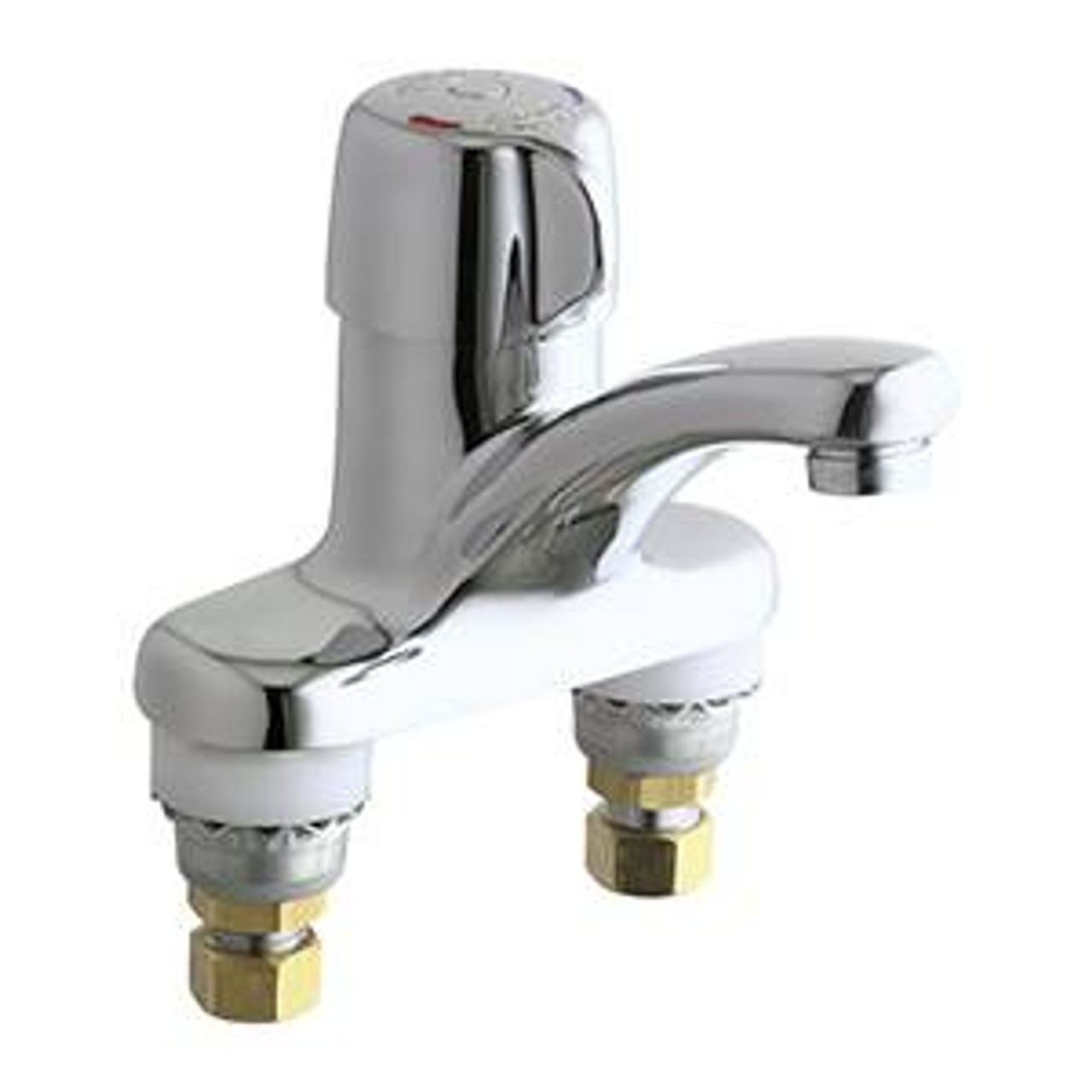Product Description
The Chicago Faucets MeterMix? faucet provides the water savings of a metering faucet combined with the convenience of temperature adjustment.
4" Fixed Centers
4 3/4" Center to Center Integral Cast Brass Spout
E2805 - 0.5 GPM (1.9 L/min) Vandal Proof Pressure Compensating Econo-Flo Non-Aerating Spray
MVP - MVP Metering Cartridge, Adjustable Cycle Time Closure
1/2" NPSM Supply Inlets and Coupling Nut for 3/8" or 1/2" Flexible Riser
Chrome Plate Finish
Discontinued
4 3/4" Center to Center Integral Cast Brass Spout
E2805 - 0.5 GPM (1.9 L/min) Vandal Proof Pressure Compensating Econo-Flo Non-Aerating Spray
MVP - MVP Metering Cartridge, Adjustable Cycle Time Closure
1/2" NPSM Supply Inlets and Coupling Nut for 3/8" or 1/2" Flexible Riser
Chrome Plate Finish
Discontinued
TIMING ADJUSTMENT
Flow cycle time may be increased or decreased by adjusting the timing. Faucet comes factory preset to meet applicable standards, which required at least 10 seconds and no more than .25 GPM per cycle at 60 PSI for both hot and cold inlet pressures. Based on supply conditions, timing may be adjusted to achieve the desired setting.NOTE: Timing must be checked with handle in place with screw. Purge any air by activating faucet 8 times rapidly, then check the cycle time.
1. Remove the button, screw and handle. Handle can be removed by gently tapping with rubber mallet or other soft object while pulling up, or wiggle while pulling up.
2. Turn the plastic serrated adjustment nut to adjust the timing: counterclockwise to shorten time, clockwise to lengthen time.
3. Adjust incrementally. After each adjustment, install handle and fully tighten screw before checking cycle time. When desired cycle time is achieved, install handle, screw and button.
NOTE: Gear must face forward as shown, and handle fin should also face forward on spout. Following these instructions will index gear and handle. Gear and handle must be indexed to assemble and rotate properly.
IMPORTANT: Small variations from cycle-to cycle should be expected.
NOTE: Some new installations may produce a slight ?closing noise?. This is a result of air trapping and the noise will dissipate over time.

Product Videos
Custom Field
Please Note This item is replaced by Chicago Faucets - 3300-ABCP
Style Rigid
Application Bathroom
Finish Polished Chrome
Type Metering
Flow Rate 0.5 gpm



